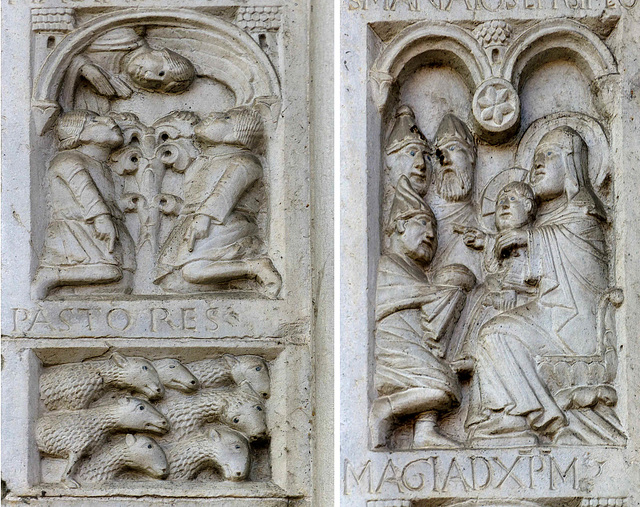Nonantola - Abbazia di Nonantola
Nonantola - Abbazia di Nonantola
Nonantola - Abbazia di Nonantola
Nonantola - Abbazia di Nonantola
Liège - Collégiale Saint-Barthélemy
Liège - Collégiale Saint-Barthélemy
Liège - Collégiale Saint-Barthélemy
Liège - Collégiale Saint-Barthélemy
Liège - Collégiale Saint-Barthélemy
Vieuxville - Chapelle Saints-Pierre-et-Paul
Vieuxville - Chapelle Saints-Pierre-et-Paul
Vieuxville - Eternity
Nivelles - Collégiale Sainte-Gertrude
Nivelles - Collégiale Sainte-Gertrude
Nivelles - Collégiale Sainte-Gertrude
Nivelles - Collégiale Sainte-Gertrude
Nivelles - Collégiale Sainte-Gertrude
Nivelles - Collégiale Sainte-Gertrude
Nivelles - Collégiale Sainte-Gertrude
Ghent - Groentenmarkt
Ghent - Vrijdagmarkt
Ghent - Bond Moyson
Ghent - Graslei
Nonantola - Abbazia di Nonantola
Nonantola - Abbazia di Nonantola
Nonantola - Abbazia di Nonantola
Nonantola - Abbazia di Nonantola
Nonantola - Abbazia di Nonantola
Modena - Duomo di Modena
Modena - Duomo di Modena
Modena - Duomo di Modena
Modena - Duomo di Modena
Modena - Duomo di Modena
Modena - Duomo di Modena
Modena - Duomo di Modena
Modena - Duomo di Modena
Modena - Duomo di Modena
Modena - Duomo di Modena
Modena - Duomo di Modena
Modena - Duomo di Modena
Modena - Duomo di Modena
Modena - Duomo di Modena
Modena - Duomo di Modena
Modena - Duomo di Modena
Modena - Duomo di Modena
Location
Lat, Lng:
You can copy the above to your favourite mapping app.
Address: unknown
You can copy the above to your favourite mapping app.
Address: unknown
See also...
Keywords
Authorizations, license
-
Visible by: Everyone -
All rights reserved
-
334 visits
Nonantola - Abbazia di Nonantola


Nonantola Abbey was founded in 752 by Saint Anselm, brother-in-law of the Lombard king Aistulf. Pope Stephen II presented relics of Saint Sylvester to the abbey, so it was named Saint Silvestro de Nonantula.
The abbey was already wealthy from the very beginning, in 780 Charlemagne endowed the abbey with many estates in Tuscany, where monks settled in Groppina (see "Pieve di San Pietro a Gropina"). In 883 the abbey was the place of a conference between Charlemagne´s great-grandson Charles III (aka "Charles the Fat") and Pope Marinus I.
The prosperious life ended, when in 900 Hungarian troops looted and completely destroyed the abbey. Reconstruction began soon after and about a century later the "imperial monastery" was one of the most powerful abbey in Europe. Abbot Godeschalc had a new basilica built in 1058. At the beginning of the Investiture Conflict it sided with the emperor, but Matilda of Tuscany stepped in and forced the abbey to change sides. It declared itself openly for the papal party in 1111.
The earthquake in 1117 damaged the abbey severely. The reconstruction started in 1121, so most of what is seen today is from the 12h century.
The doorposts of the portal are covered with carvings. Some are attributed to the School of Wiligelmo. Wiligelmo and his workshop worked at that time as well in Modena, only 10kms southwest.
Here is the "Annunciation to the shepherds" and the "Adoration of the Magi". The Magi (still) wear caps, some time later they get promoted to Kings and wear crowns, bringing them in a kind of lineage to the ruling Kings and Emperors of the middle ages.
The abbey was already wealthy from the very beginning, in 780 Charlemagne endowed the abbey with many estates in Tuscany, where monks settled in Groppina (see "Pieve di San Pietro a Gropina"). In 883 the abbey was the place of a conference between Charlemagne´s great-grandson Charles III (aka "Charles the Fat") and Pope Marinus I.
The prosperious life ended, when in 900 Hungarian troops looted and completely destroyed the abbey. Reconstruction began soon after and about a century later the "imperial monastery" was one of the most powerful abbey in Europe. Abbot Godeschalc had a new basilica built in 1058. At the beginning of the Investiture Conflict it sided with the emperor, but Matilda of Tuscany stepped in and forced the abbey to change sides. It declared itself openly for the papal party in 1111.
The earthquake in 1117 damaged the abbey severely. The reconstruction started in 1121, so most of what is seen today is from the 12h century.
The doorposts of the portal are covered with carvings. Some are attributed to the School of Wiligelmo. Wiligelmo and his workshop worked at that time as well in Modena, only 10kms southwest.
Here is the "Annunciation to the shepherds" and the "Adoration of the Magi". The Magi (still) wear caps, some time later they get promoted to Kings and wear crowns, bringing them in a kind of lineage to the ruling Kings and Emperors of the middle ages.
(deleted account) has particularly liked this photo
- Keyboard shortcuts:
Jump to top
RSS feed- Latest comments - Subscribe to the comment feeds of this photo
- ipernity © 2007-2025
- Help & Contact
|
Club news
|
About ipernity
|
History |
ipernity Club & Prices |
Guide of good conduct
Donate | Group guidelines | Privacy policy | Terms of use | Statutes | In memoria -
Facebook
Twitter

Sign-in to write a comment.